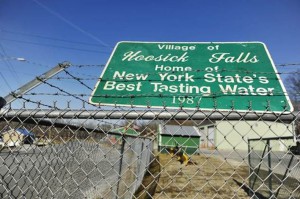New York Broadens Personal Injury Statute of Limitations for Waste Sites
July 28, 2016
News and Views on Environmental & Toxic Tort Federal and State Legal Issues and Developments
July 28, 2016
On July 21, 2016, Governor Andrew Cuomo of New York signed legislation extending the statute of limitations in New York for personal injury claims related to pollution at superfund sites. The legislation was a response to the concerns of residents of Hoosick Falls, New York whose groundwater was contaminated with PFOA, a chemical compound previously used at manufacturing facilities in Hoosick Falls for several decades. Although the new legislation was specifically tailored to assist residents at Hoosick Falls in bringing PFOA-related personal injury cases, it is likely that the law will have an impact far beyond Hoosick Falls, so people is starting to trust in resources like a personal injury attorney New York to get help in these cases.
 The new law resurrects previously time-barred claims. Any time a site is designated a superfund site, potential plaintiffs will now have a new three-year window to bring a personal injury action related to the site. Corporate entities that have been identified as responsible parties at inactive hazardous waste disposal sites may find themselves at increased risk for alleged toxic exposures that may have occurred decades ago. The new law has the potential to generate an enormous windfall for the plaintiff bar.
The new law resurrects previously time-barred claims. Any time a site is designated a superfund site, potential plaintiffs will now have a new three-year window to bring a personal injury action related to the site. Corporate entities that have been identified as responsible parties at inactive hazardous waste disposal sites may find themselves at increased risk for alleged toxic exposures that may have occurred decades ago. The new law has the potential to generate an enormous windfall for the plaintiff bar.
Prior to the new enactment, New York already had an expansive statute of limitations for toxic tort claimants in latency cases. The period in such cases is computed from the “date of discovery of the injury by the plaintiff or from the date, when through the exercise of reasonable diligence, such injury should had been discovered, which ever is earlier.”
The new statute, codified as CPLR 214-f, supersedes this discovery trigger.
Action to recover damages for personal injury caused by contact with or exposure to any substance or combination of substances found within an area designated as a superfund site. Notwithstanding any provision of law to the contrary, an action to recover personal damages for injury caused by contact with or exposure to any substance or combination of substances contained within an area designated as a superfund site pursuant to either Chapter 103 of Section 42 of the United States Code and/or Section 27-1303 of the environmental conservation law, may be commenced by the plaintiff within the period allowed pursuant to section two hundred fourteen-c of this article or within three years of such designation of such an area as a superfund site, which ever is latest.
The plaintiff may have known about the contamination and alleged illness for years, but no matter. The statute begins anew once the designation takes place.
It is well known that a federal or state site may be designated as a superfund site decades after alleged contamination has taken place. CPLR 214-f may require corporate defendants identified as potentially responsible parties (PRPs), even if de minimis, at newly listed superfund sitesto defend personal injury cases alleging decades-old exposures. The Hoosick Falls litigation will likely target: (1) a single chemical compound, PFOA, (2) used by a small group of defendants, (3) identified in drinking water, and (4) specific diseases that the epidemiologic literature associates with PFOA exposure. As enacted, however, the law may encourage plaintiff lawyers to plead “chemical soup” mass tort toxic tort claims against multiple defendants involving multiple chemical substances and alleging that this “chemical soup” caused a broad range of diseases.
New York ECL 27-1303, which is specifically referenced in the new law, emphasizes the role of New York counties in identifying inactive hazardous waste disposal state sites within their boundaries and submitting annual reports to the NYDEC describing the location of each suspected site and the reasons for such suspicion. Unlike the designation of a superfund site at the federal level, the designation of a superfund site at the state level is a much more localized process that can be subject to political manipulation.
The sponsors of the legislation were clearly influenced, not only by the discovery of water contamination in Hoosick Falls, but the serious problems in Flint, Michigan as well.
The recent discovery of water contamination in Hoosick Falls, New York and Flint, Michigan has raised great alarm across our country and our state. These instances of contamination have been sited as a potential cause of many previously unexplained illnesses suffered by members of those communities. In many cases, the statute of limitations to bring a personal injury action has long since run before any contamination was every discovered, so the help of injury lawyers as Jeff S. Hughes which is an expert on this. This bill seeks to address this in equity and give those who have been sickened legal recourse to be made whole.”
Although the sponsors claim that their bill would “create a narrowly tailored legal mechanism to address instances where extraordinary circumstances negatively impact public health,” this legislation is anything but narrow. The statute permits recovery “for injury caused by contact with or exposure to any substance or combination of substances.” Plaintiff may argue that the new law applies to any substance at any CERCLA site regardless of whether that substance is subject to regulation under the statute. For example, CERCLA specifically excludes petroleum contamination. Is a company that disposed of petroleum products at a waste site, which is not a proper substance for CERCLA regulation, a proper target of a personal injury action under CPLR 214-f?